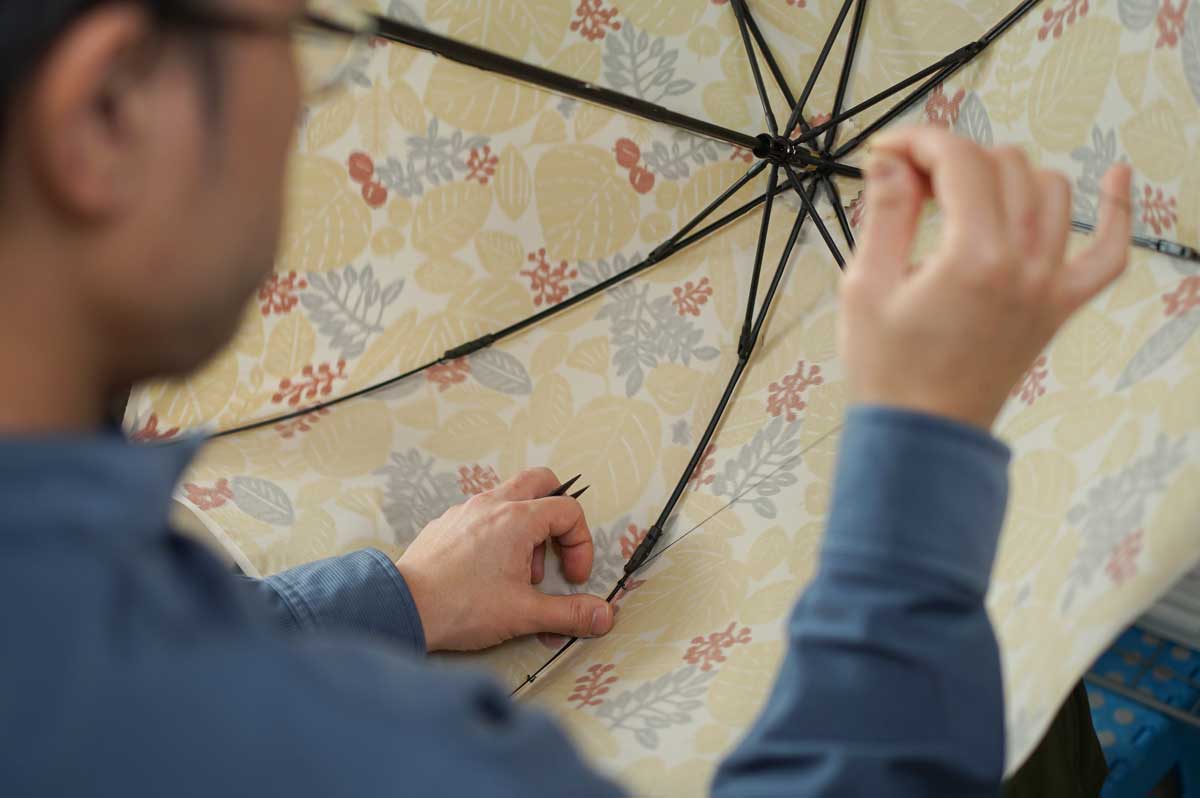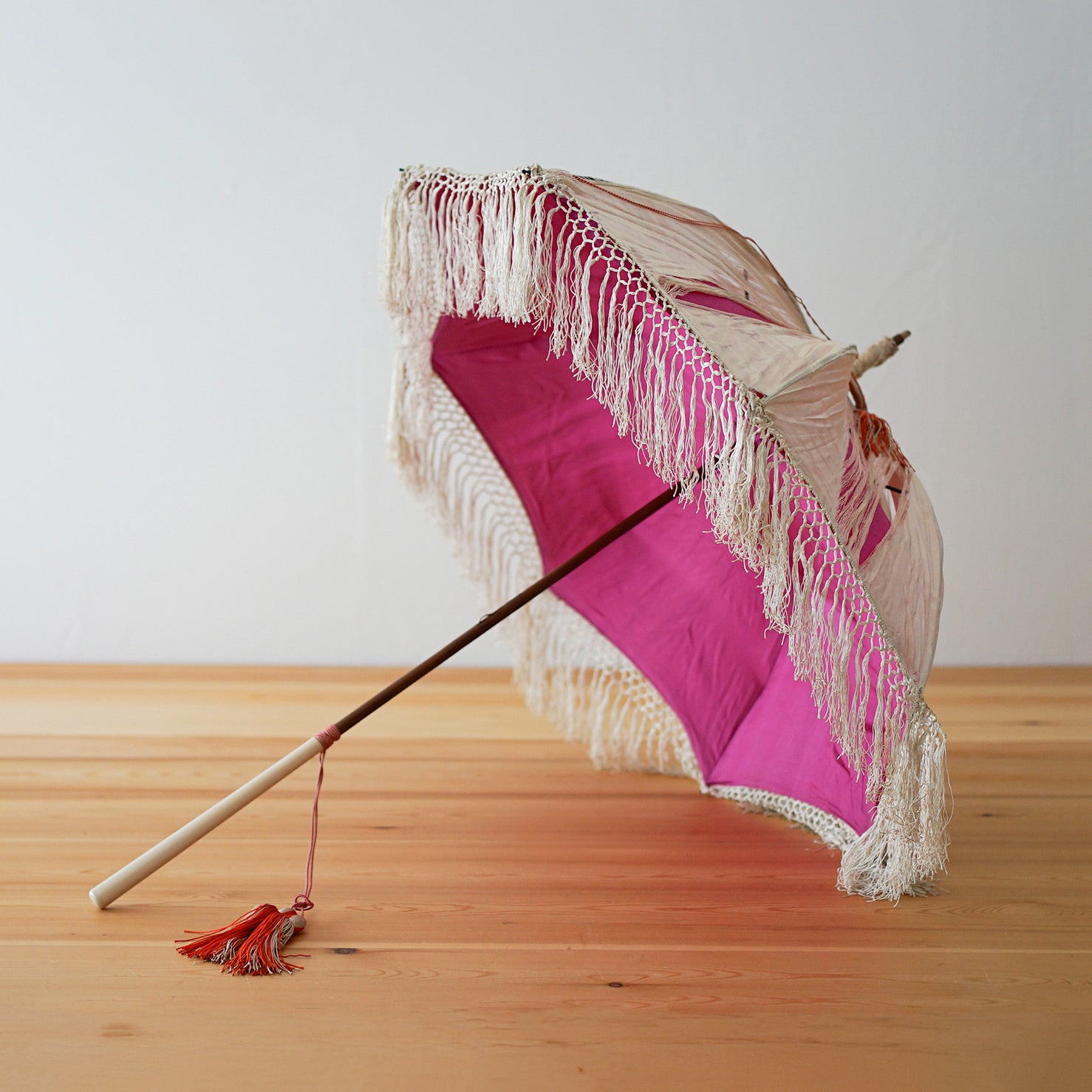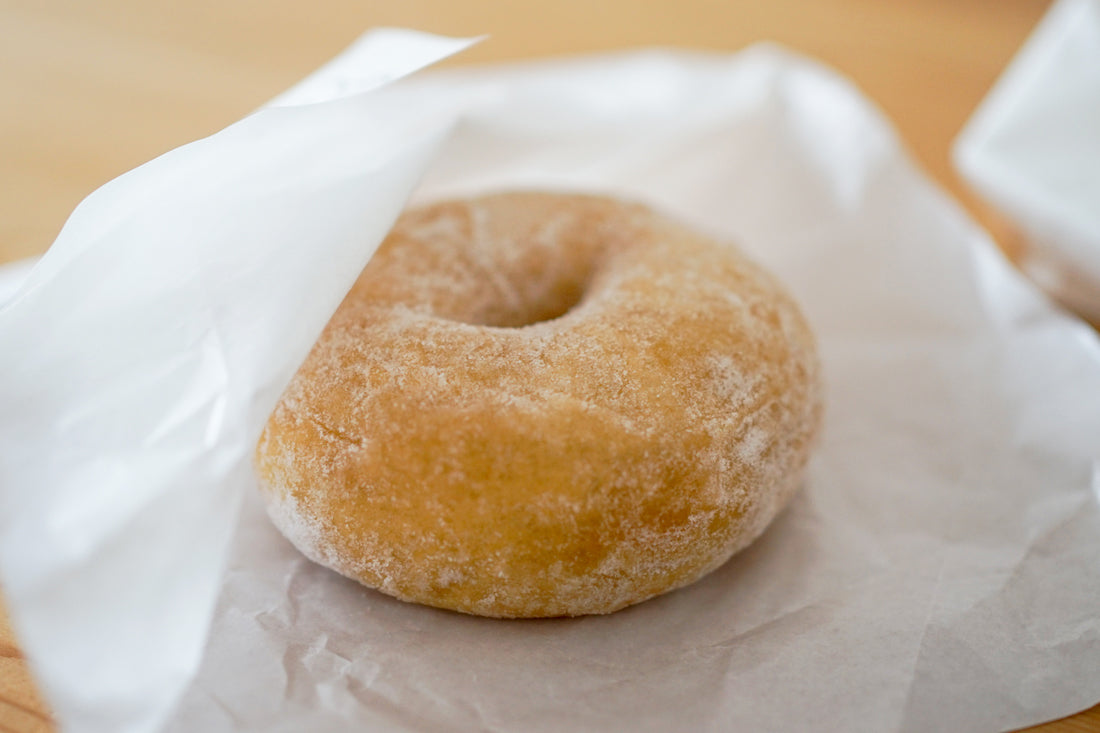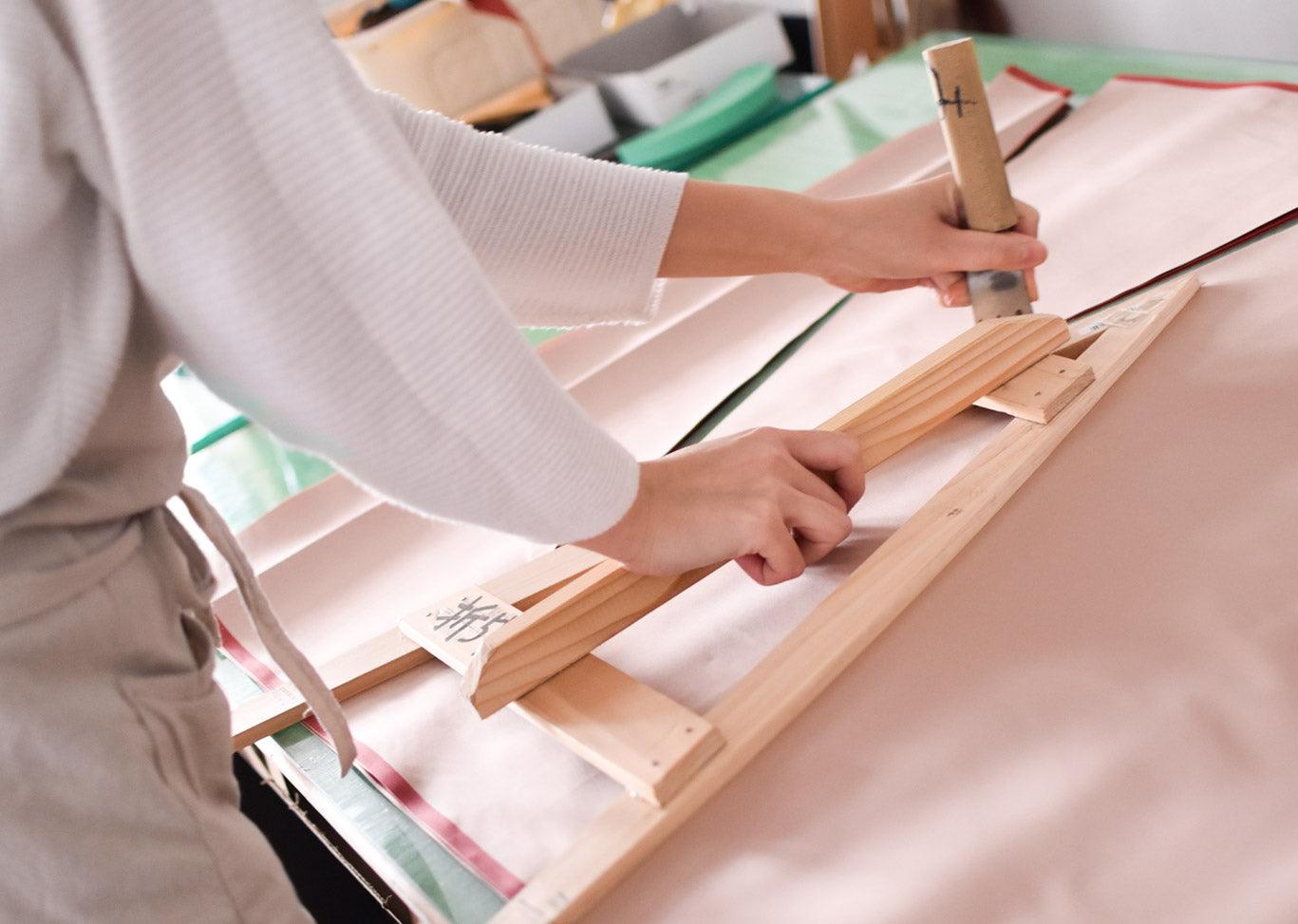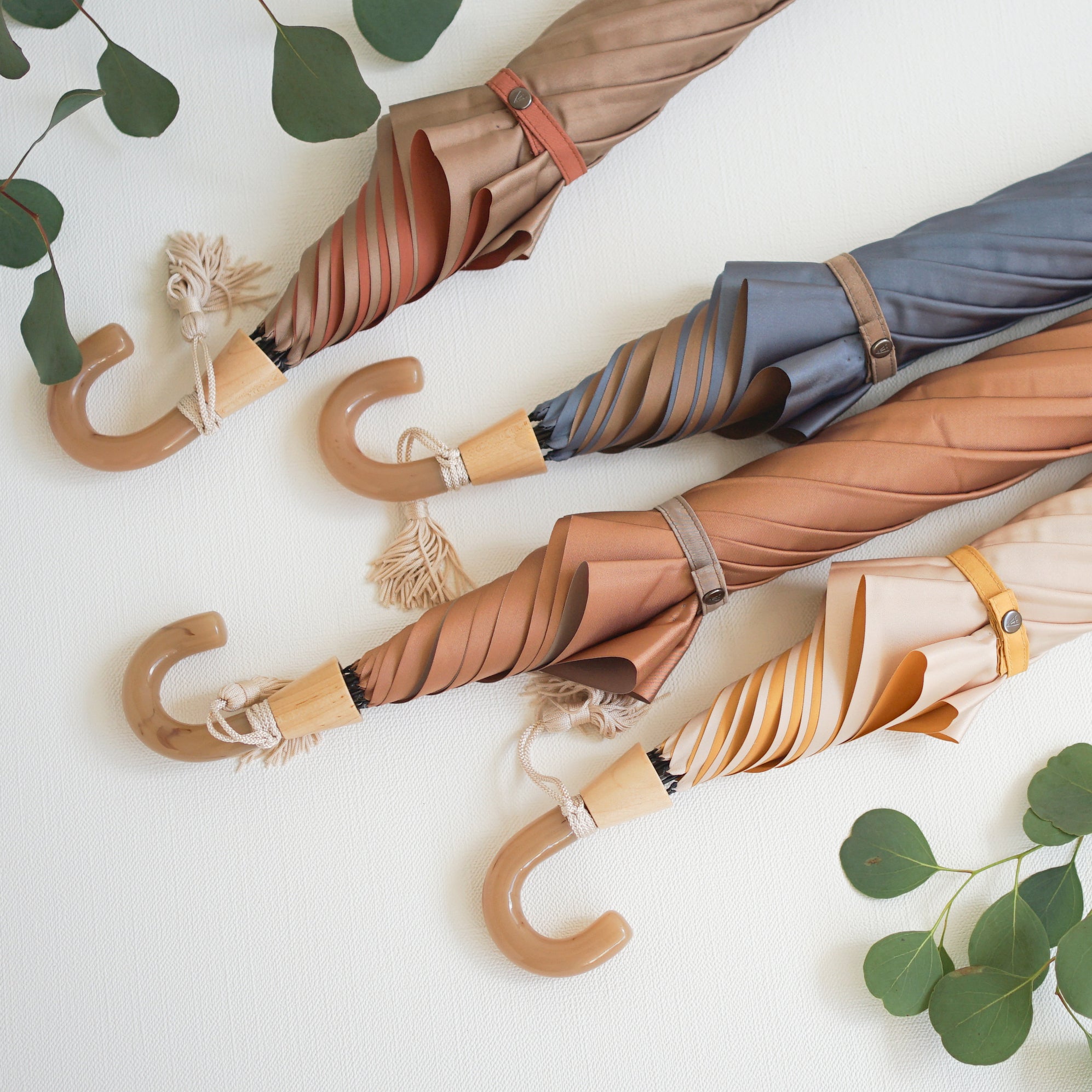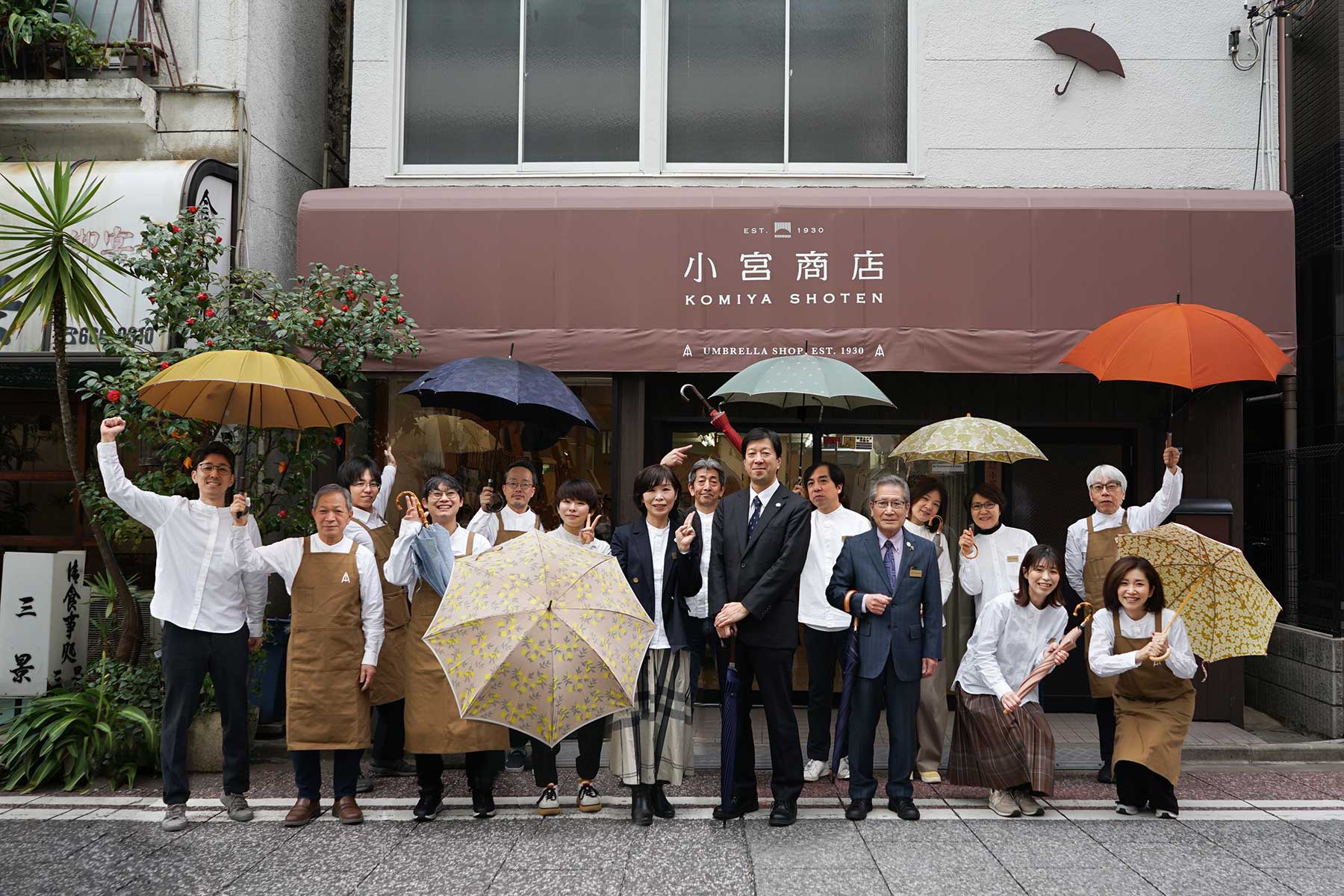A single thread going back and forth creates "beauty"
If you look closely at the fabric of commercially available Western-style umbrellas, you will see that a piece of fabric called a "koma" (a curvaceous triangular shape) is cut and sewn together to create a circular piece of fabric called a "cover."
To make Koma, craftsmen unfold the rolled fabric and cut it using a triangular wooden mold to create each piece of isotropic triangular fabric. These original rolls of fabric can be broadly divided into two types: wide width and narrow width.
"Wide" literally means wide fabric. It is about 120-130cm wide, and if you cut it in half in the middle, you get two pieces of fabric 60-65cm wide, each of which has a bisect curved triangle shape, making it very efficient. Most of the umbrella fabrics currently being made are of this wide width.
However, in order to prevent the threads from fraying, the base of the isotropic triangular fabric (the edge of the umbrella cover) needs to be folded very thinly in thirds and sewn, a process known as "three-rolling."
On the other hand, "narrow width" refers to a narrow fabric, about 60cm wide. Since the width is the width of one isotropic triangular piece of fabric, efficiency is low and costs are high. However, there are also advantages. The secret is in the weaving method.
Narrow-width fabrics are characterized by the use of traditional shuttle looms. Shuttle means "round trip" in English, and is a word often heard in reference to shuttle buses, space shuttles, and other vehicles that move back and forth. Shuttle looms are the same, and use a device called a shuttle that moves back and forth repeatedly to pass a continuous weft thread through the warp thread.
In other words, the key point is that the weft threads are woven without being cut, remaining connected throughout the process. And it is this weaving method that has the effect of highlighting the "beauty" that is so important to high-quality Western-style umbrellas.
The narrow width creates sharp edges and a beautiful arch
The advantage of weaving with a single weft thread is that the thread at the edge of the umbrella cover is connected, so there is no need to worry about fraying. This means that there is no need for a triple wrap, and the edge of the umbrella has no stitching, resulting in a sharp and very refined finish. The beauty of the edge detail is immediately obvious when compared to an umbrella with a triple wrap, and this is a product that truly shows the attention to detail.
In addition, when the fabric is opened, the edges of each section form a beautiful, symmetrical arch, which is another notable feature of narrow-width fabrics. The shuttle loom has a shorter distance for the weft thread than a wide-width loom, meaning the thread can be thrown straight, making it less likely for the fabric to become warped.
The narrow fabric, which minimizes the bending of the fabric, has a beautiful shape because the apex of the hollow is in the center. The only factory left that uses shuttle looms to make narrow fabric for umbrellas is in Yamanashi Prefecture.
Komiya Shoten uses this precious narrow fabric and instead of the usual single warp thread, they use two, one upper thread and one lower thread, to create high-end double-layered umbrellas with different colors for the outer and inner lining, under the brand names "Tachibana" for men and "Kasane" for women. A typical 60cm umbrella has around 5,000 warp threads, but "Tachibana" and "Kasane" have 10,000 threads in total, including the upper and lower threads. This doubles the density of normal umbrellas, giving them a heavy feel and durability.
Umbrellas made with narrow fabric are the highest quality among luxury umbrellas. If you are particular about your umbrellas and have one as a status symbol, it will make your fashion life even more fun.


